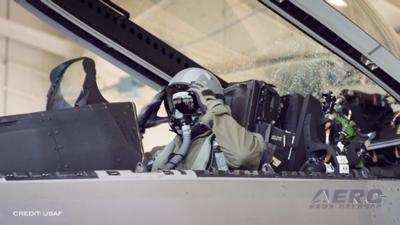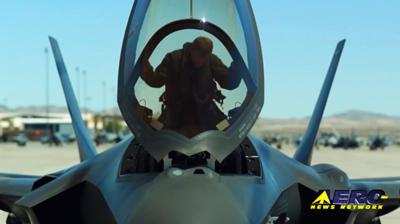Fri, Sep 24, 2021
New Guidelines Have Been Established In Support Of Rated Diversity

Several Air Education and Training Command initiatives to remove barriers for qualified candidates after the Air Force completed their six-month assessment of their Initial Racial Disparity Report. These changes came after extensive research conducted by the pilot selection process, by a group responsible for identifying potential barriers to entry.
“Our studies concluded that these changes will result in more qualified candidates of underrepresented groups being selected for training,” said Lt. Col. Brandi King, the working group’s AETC lead.
The second-largest component of an applicant’s PCSM score is prior flying experience. In consideration of candidates facing socioeconomic barriers or lack of access to the financial means to access flying lessons, the Air Force now will only consider a candidate's initial 60 flight hours when processing scores.
According to the Air Force, pilot candidates may now:
- Use their highest composite scores from any Air Force Officer Qualifying Test (AFOQT) rather than the most current score.
- Complete the Test of Basic Aviation Skills (TBAS) up to three times, with the third requiring a waiver from the applicant’s wing commander or equivalent.
- Re-take the AFOQT and TBAS after 90 days compared to the previous 150-day requirement for the AFOQT and 180 days for the TBAS.
- Participate in study sessions with other individuals who have not yet taken the test if the examinee has also never taken the AFOQT.

“There is no evidence that more than 61 hours of flight experience poses a significant benefit to pilot training success,” said Dr. Katie Gunther, chief of strategic research and assessment at the Air Force Personnel Center. “The probability of success in flight training increases substantially from 0 hours to 60 hours, then relatively plateaus.”
“Flying lessons are expensive and could potentially exclude qualified candidates from becoming pilots in the Air Force due to limited income or lack of opportunities,” said Brig. Gen. Brenda Cartier, AETC’s Director of Operations and Communications and the pilot selection process working group’s overall lead. “In order to ensure we do not eliminate otherwise qualified candidates, flight programs have been implemented at both the United States Air Force Academy and the Air Force Reserve Officer Training Corps. Cadets receive free ground and flight training, and an opportunity to gain critical skills and directly improve their competitiveness for pilot selection boards.”
More News
Aero Linx: The American Society of Aerospace Medicine Specialists (ASAMS) The Society is a non-profit organization created to serve as a voice for and represent the professional ne>[...]
Class C Service This service provides, in addition to basic radar service, approved separation between IFR and VFR aircraft, and sequencing of VFR aircraft, and sequencing of VFR a>[...]
Have A Story That NEEDS To Be Featured On Aero-News? Here’s How To Submit A Story To Our Team Some of the greatest new stories ANN has ever covered have been submitted by our>[...]
Also: ERAU Uses UAVs, P550 Group 2 UAS, Starship’s Florida Launches, NASA Missions Chopped The Air Force has put out a call to commission a one-to-one copy of the Iranian-des>[...]
Classic Klyde Morris From 11.07.16 (and Remembering Bob...) FMI: www.klydemorris.com>[...]
 ANN's Daily Aero-Linx (08.27.25)
ANN's Daily Aero-Linx (08.27.25) ANN's Daily Aero-Term (08.27.25): Class C Service
ANN's Daily Aero-Term (08.27.25): Class C Service ANN FAQ: Submit a News Story!
ANN FAQ: Submit a News Story! Airborne-NextGen 08.26.25: Iran UAV Knockoffs, X-37B Spaceplane, Army Training
Airborne-NextGen 08.26.25: Iran UAV Knockoffs, X-37B Spaceplane, Army Training Classic Klyde Morris (08.25.25)
Classic Klyde Morris (08.25.25)




